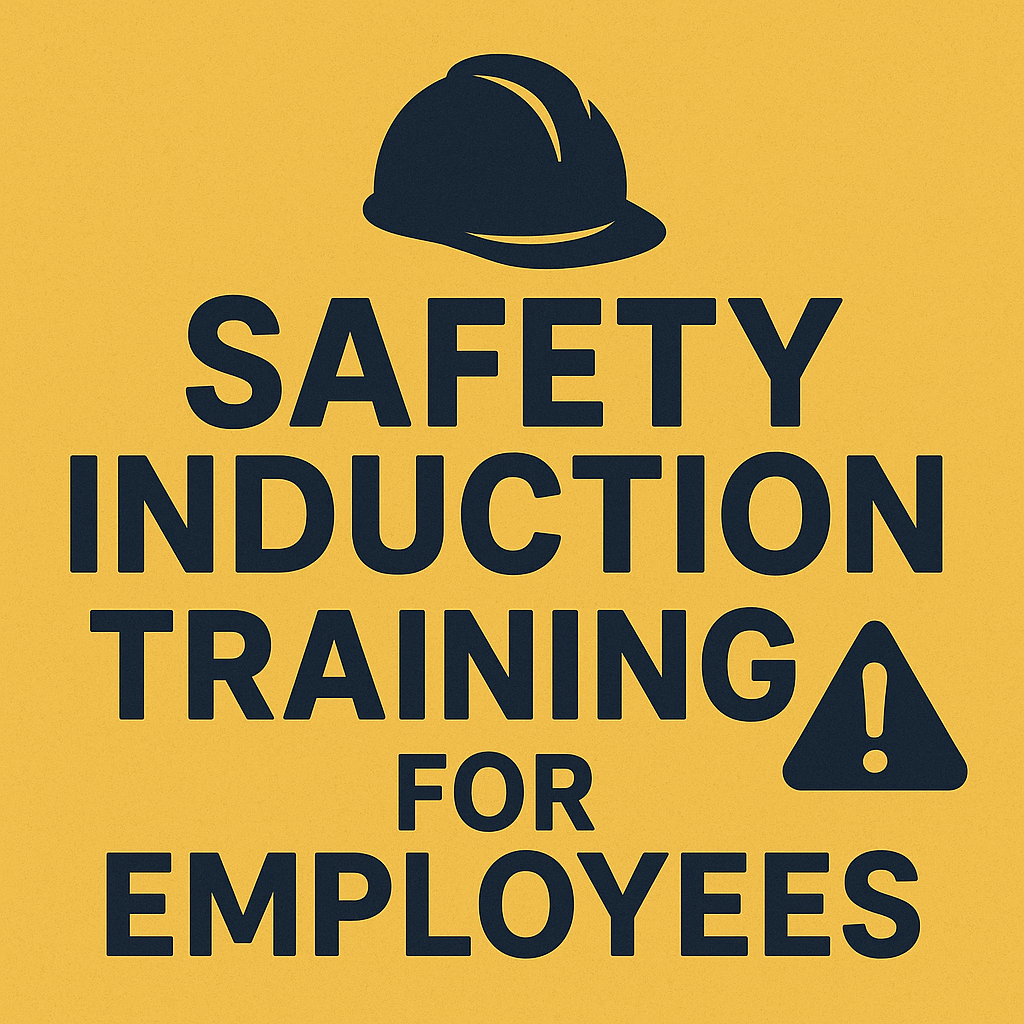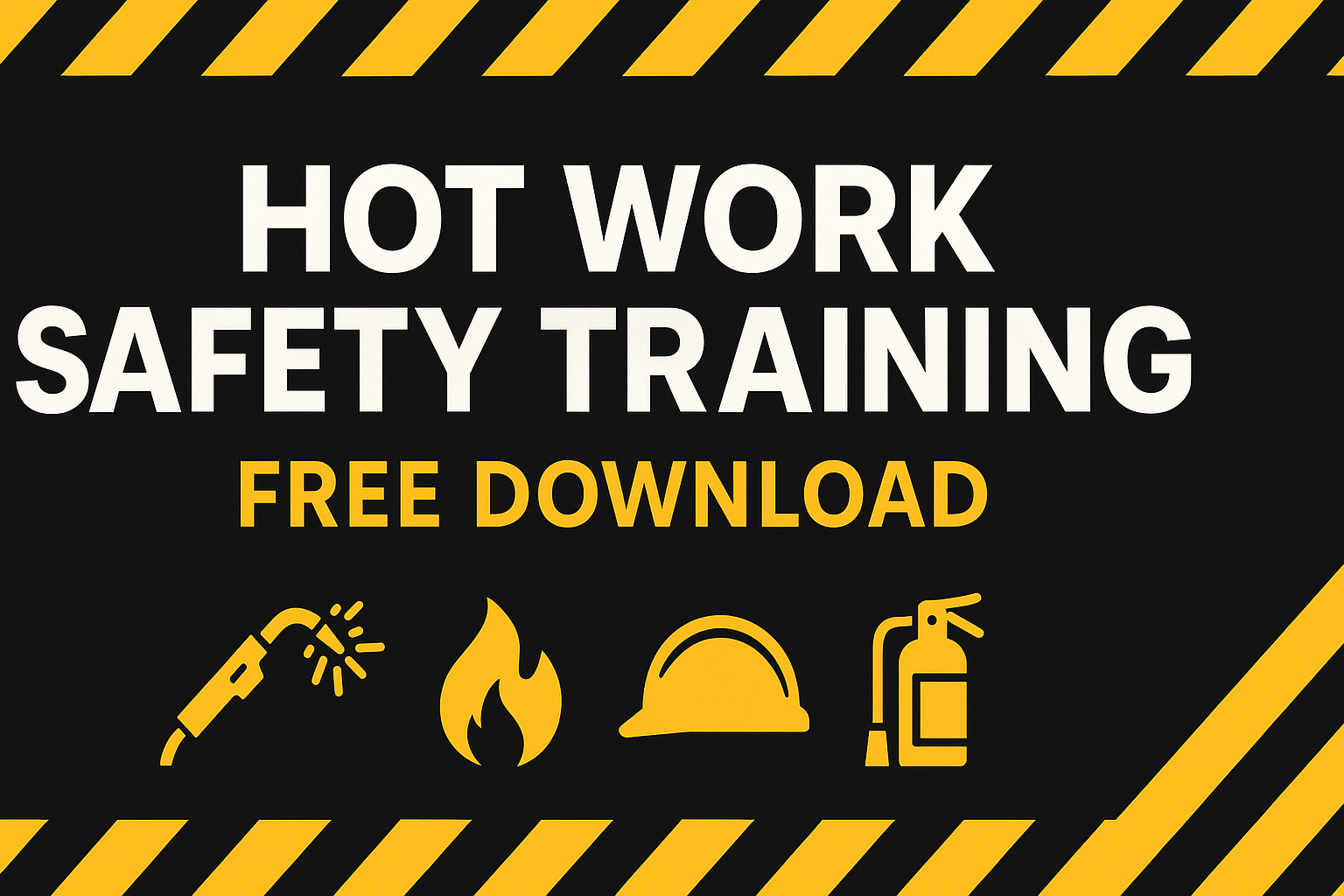
Safety Induction Training for Employees
Safety Induction Training is the first step in ensuring that every employee understands workplace hazards, safety responsibilities, emergency protocols, and how to protect themselves and others.
Objectives of Safety Induction Training
- Familiarize employees with company safety policies and procedures
- Ensure understanding of legal responsibilities
- Identify potential hazards in the workplace
- Promote a strong safety culture
- Reduce risk of incidents and injuries
Who Needs Safety Induction Training?
- New employees
- Contractors and temporary workers
- Visitors (briefed with a basic safety overview)
- Employees moving to a new site or role
Contents of Safety Induction Training
1. Welcome & Company Safety Philosophy
- Company’s commitment to health and safety
- Management roles in enforcing safety culture
2. Health and Safety Policy
- Overview of the policy
- Key objectives and employee responsibilities
3. Legal Responsibilities
- Employee’s duty under OSHA/Factory Act/Local laws
- Consequences of non-compliance
4. Workplace Hazards
- Common physical, chemical, biological, and ergonomic hazards
- Specific hazards related to job roles
5. Personal Protective Equipment (PPE)
- Types of PPE required
- Proper use, maintenance, and storage
- Mandatory PPE zones
6. Emergency Procedures
- Emergency exits and evacuation routes
- Alarm sounds and responses
- Assembly points
- Fire extinguisher usage and emergency contacts
7. Incident Reporting
- Near miss, accident, and unsafe condition reporting procedures
- Investigation and follow-up
8. First Aid and Medical Assistance
- Location of first aid kits and stations
- Contact persons (first aiders)
- Injury reporting
9. Housekeeping & Cleanliness
- Importance of maintaining a clean and clutter-free environment
- Waste disposal procedures
10. Tools and Machinery Safety
- Authorized personnel for equipment operation
- Lockout/Tagout procedures
- Pre-use inspection of tools
11. Safe Work Practices
- Working at height
- Manual lifting
- Confined spaces
- Electrical safety
12. Prohibited Acts
- Horseplay
- Unauthorized equipment use
- Substance abuse in the workplace
13. Safety Signage
- Types of safety signs
- Mandatory, warning, prohibition, and emergency signs
14. Smoking, Drugs, and Alcohol Policy
- Designated smoking areas
- Strict prohibition of alcohol/drug use
15. Security Procedures
- Access control
- ID cards and visitor badges
- Site-specific security rules
16. Environmental Protection
- Pollution control
- Spillage management
- Energy-saving and waste minimization practices
17. Reporting Unsafe Conditions
- How to report hazards or safety concerns
- Whom to inform
- Role of Safety Committee
18. Safety Committee and Roles
- Safety Officer, First Aider, Fire Warden
- Reporting channels and meeting frequency
Sample Safety Induction Training – Construction Site
1. Welcome & Company Safety Philosophy
“Welcome to ABC Constructions Pvt. Ltd. We are committed to maintaining a zero-accident worksite. Safety is our core value — every task must be done safely or not at all. Your safety and the safety of your co-workers is our top priority.”
2. Health and Safety Policy
“Our policy requires every worker to comply with all safety procedures, wear PPE at all times, report unsafe acts, and participate in safety meetings. Management is committed to providing the tools and training necessary to work safely.”
3. Legal Responsibilities
“As per the Factories Act and local labor laws, every worker has a legal responsibility to take care of their own safety and that of others. You are required to follow safety instructions, use PPE, and avoid unsafe practices.”
4. Workplace Hazards
Common hazards at this site include:
- Falling objects from scaffolding
- Electrical hazards from temporary connections
- Excavation collapse
- Trips from uneven surfaces and debris
- Noise and dust exposure
Always remain alert and follow your supervisor’s instructions.
5. Personal Protective Equipment (PPE)
You must wear the following PPE at all times:
- Safety helmet (with chin strap)
- Reflective vest
- Safety shoes (steel toe)
- Gloves when handling materials
- Goggles during cutting or grinding
- Earplugs when exposed to high noise
PPE must be inspected daily and replaced if damaged.
6. Emergency Procedures
In case of emergency:
- The alarm will sound in a continuous siren
- Proceed to the assembly point near Gate No. 2
- Do not run or panic; walk quickly and assist others
- Fire extinguishers are placed near the site office and store
- First aid room is located next to the security cabin
7. Incident Reporting
All incidents, near misses, and unsafe conditions must be reported to your Supervisor or the Safety Officer immediately. Reports help us prevent future accidents.
8. First Aid and Medical Assistance
- First aiders: Mr. Ramesh (Supervisor), Ms. Anita (Safety Officer)
- In case of injury, do not attempt self-treatment for major injuries
- Call the first aider or inform the site office
- Emergency ambulance is on standby at the main gate
9. Housekeeping & Cleanliness
- Keep your area clean
- Do not leave tools, nails, or boards lying around
- Dispose of waste in the designated bins
- Do not block pathways or exits
10. Tools and Machinery Safety
- Only trained personnel are allowed to operate machinery like concrete mixers, cranes, and cutting tools
- Inspect tools before use
- Never bypass safety guards
- Report faulty equipment to your supervisor
11. Safe Work Practices
- Working at height requires full-body harness and fall arrestors
- Manual lifting: bend your knees, keep your back straight
- Confined space work needs a permit and gas test
- Electrical safety: Do not touch exposed wires or use unauthorized connections
12. Prohibited Acts
- Do not engage in horseplay or running on site
- Never remove safety signs or barriers
- No alcohol or drugs allowed on site
- Do not use mobile phones while walking near plant or equipment
13. Safety Signage
Pay attention to:
- Mandatory signs: “Wear Helmet,” “Wear Safety Shoes”
- Warning signs: “High Voltage,” “Open Excavation”
- Prohibition signs: “No Smoking,” “No Entry”
- Emergency signs: “Assembly Point,” “First Aid”
14. Smoking, Drugs, and Alcohol Policy
- Smoking is only allowed in designated smoking zones
- Alcohol and drugs are strictly prohibited; random testing is done
- Any violation leads to removal from site
15. Security Procedures
- Wear your ID badge visibly at all times
- Do not allow unauthorized persons to enter the site
- Sign in and out at the security gate
- Report lost tools or materials immediately
16. Environmental Protection
- Prevent spills of oil, diesel, and chemicals
- Do not throw construction waste into drains
- Use designated waste bins for segregation
- Report any pollution incidents to the Environment Officer
17. Reporting Unsafe Conditions
- If you see an open pit without a barrier, exposed wiring, or someone working unsafely, report it
- You can report to your Supervisor or directly to the Safety Officer
- Your report will be kept confidential if requested
18. Safety Committee and Roles
- Safety Officer: Ms. Anita
- Fire Warden: Mr. Suresh
- First Aider: Mr. Ramesh
Monthly safety meetings are held every first Monday — you’re encouraged to share concerns.
Assessment and Acknowledgment
All workers will take a short quiz after this induction to confirm their understanding. Please sign the Safety Induction Acknowledgment Form to confirm your participation and understanding of site safety requirements.
Conclusion
“Your safety is your responsibility — but you’re not alone. If you’re ever unsure, stop work and ask. It’s better to be safe than sorry. Let’s work together to make this construction site accident-free.”
Delivery Methods
- PowerPoint presentations
- Videos or animations
- Practical demonstrations
- Site walk-around
- Written materials and handbooks
Assessment and Acknowledgment
- Short quiz or verbal Q&A
- Safety acknowledgment form signed by the employee
Training Frequency
- Initial induction (on joining)
- Refresher induction (annually or after an incident)
- When changing job roles or work areas
Conclusion
Safety is everyone’s responsibility. Induction training ensures that each employee starts their job with safety as a priority. A strong start in safety builds a safer work culture and minimizes risks.
50 Workplace Safety Topics for Meetings
How to Conduct a Safety Induction for New Workers (With Script)
Hand and Power Tool HSE Training
HIRA HSE Training (Hazard Identification and Risk Assessment)
























